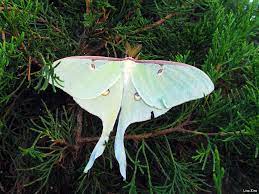Watching swarms of tiny insects dive into burning fires can be fascinating, but what drives them to this fiery death? From the first man-made fire to modern light fixtures, artificial illumination has drawn insects in, often to their deaths. Until now, it has been widely theorized that insects are attracted to light, even when it goes against their drive for survival. This theory of fatal attraction seems plausible as we watch moths, beetles, and flies race toward the light, but in reality, they’re just confused.
Over the last two years, a team of researchers led by Samuel Fabian collected field data in Costa Rica that shed light on this peculiar behavior. Using high-resolution motion capture and stereo-videography, the researchers were able to capture the flight trajectories of ten orders of insects as they flew in the presence of artificial light. Analyses of the three-dimensional flight data allowed the scientists to reproduce a model of the insects’ behavior and orientation throughout their flight, demonstrating that an innate behavior is responsible for the light-entrapment phenomenon.
“The insectual desire to tilt backward toward a light source is driven by navigational needs.”
The insectual desire to tilt backward toward a light source is driven by navigational needs. Since long before the existence of humans, insects have relied on the light from the sun, stars, and moon to orient themselves as they fly through the air. This is due to the presence of a natural “dorsal light response” that leads insects to orient their dorsal axes towards the light, which helps them move along a consistent flight path. This was an effective mechanism back when the sky was the only light source at night, but the advent of artificial light has created some major complications.
When insects are exposed to unnatural light sources, it interferes with their environmental markers of direction, so they end up getting lost and disoriented. The mixed signals they receive from their surroundings cause them to lose track of which way is up, and they end up plummeting to the ground. It turns out that a singular artificial light source, even a small one, can literally turn an insect’s world upside down, and it’s all the result of a simple biological wayfinding process.
“A singular light source, even a small one, can literally turn an insect’s world upside down.”
The researchers wanted to understand exactly how insects are altering their flight paths towards unnatural light. They identified three primary flight behaviors in their study: orbiting, stalling, and inversion. Orbiting was characterized by a relatively stable circular flight path with constant speed, stalling was identified as a steep climb facing away from the light with declining speed until coming to a stop, and inversion occurred when insects flew directly over a light source and rotated, resulting in a steep dive to the ground. These behaviors disrupted their flight paths because they ended up facing the sky, opposite to their normal orientation. Examining this phenomenon is one way of understanding how humans have impacted the evolutionary programming of wildlife.
When we consider the lengthy span of insect existence, artificial light is a recent introduction. With increasing human development and destruction of natural ecosystems, the detrimental effects of artificial light on insects will only continue to worsen. Future studies could aim to modify artificial light sources to reduce their effects on insect navigation, in order to preserve the lives of the small, but critical creatures that keep our environment healthy.






